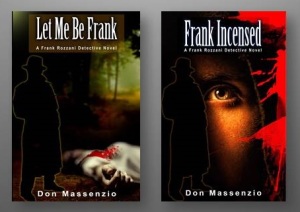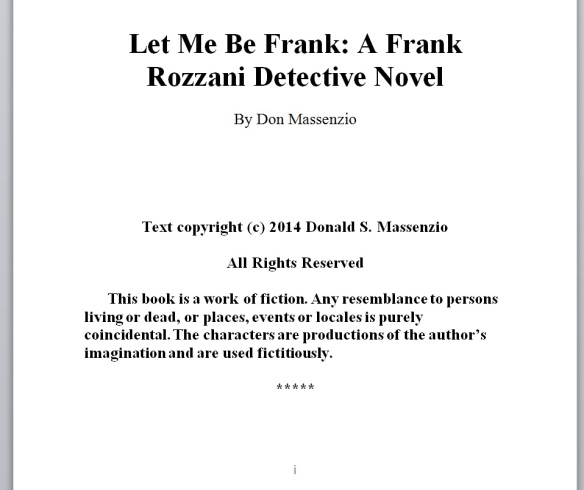I am passionate about writing mostly because, throughout my life, I have been passionate about reading. When I was a kid, I lived in a neighborhood that had very few children. I lived in a house on a busy road that served as the main access road to a hospital emergency road. I didn’t learn to ride a bike until I was about 13.
I realized early on that my only escape was reading. I read everything I could get my hands on. Luckily, I lived in a house that had collected a lot of books over the years. My brother is 13 years older, so there were many books that he read as a child hanging around.
 The house I lived in was over 100 years old and the full-sized walk-in attic had a finished room that was once a laboratory for a scientist that lived in the house. There were bookshelves with all kinds of very old books and encyclopedias.
The house I lived in was over 100 years old and the full-sized walk-in attic had a finished room that was once a laboratory for a scientist that lived in the house. There were bookshelves with all kinds of very old books and encyclopedias.
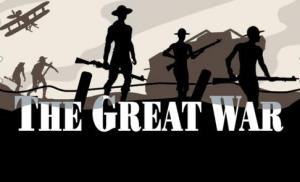 I knew that the encyclopedias were old when they listed an event called ‘The Great War’. It hadn’t earned the label ‘World War I’ yet because the books were published before World War II. I also found another book that had a clipped newspaper article wedged in the pages that covered the funeral of President George Washington. It was a fascinating place full of discoveries and fertilizer for the imagination.
I knew that the encyclopedias were old when they listed an event called ‘The Great War’. It hadn’t earned the label ‘World War I’ yet because the books were published before World War II. I also found another book that had a clipped newspaper article wedged in the pages that covered the funeral of President George Washington. It was a fascinating place full of discoveries and fertilizer for the imagination.
 The first books I can remember reading that were ‘chapter books’, as the kids call them today, was the Bobbsey Twins series written under the pen name, Laura Lee Hope. The books, published first in 1904 and followed the adventures of two sets of fraternal twins. These books were predecessors to The Hardy Boys and Nancy Drew books (which I also read). Since my brother was so much older and was married and out of the house when I was seven, these books taught me about families with multiple siblings and made me wish I had a twin or even another sibling closer in age that I could play with.
The first books I can remember reading that were ‘chapter books’, as the kids call them today, was the Bobbsey Twins series written under the pen name, Laura Lee Hope. The books, published first in 1904 and followed the adventures of two sets of fraternal twins. These books were predecessors to The Hardy Boys and Nancy Drew books (which I also read). Since my brother was so much older and was married and out of the house when I was seven, these books taught me about families with multiple siblings and made me wish I had a twin or even another sibling closer in age that I could play with.
Around this time, I started writing my own stories. I remember writing a series of illustrated stories based on the character “Tiny the Giant” when I was about eight or nine. Tiny experienced all manner of adventures with special attention paid to his enormous size in relation to his friends. It was sort of a Clifford the Big Red Dog kind of scenario.
 I remember the first adult-oriented book that I read. It was The Godfather. My parents went off with the rest of the adult members of my Italian family to see the movie in 1972. My mom had read the book and then put it on our bookshelves telling me not to read it. Of course, I did, and I was transported by the style of writing. I’m sure there were parts of it that I didn’t understand, but the sense of family among the brutal events of an organized crime syndicate resonated with me.
I remember the first adult-oriented book that I read. It was The Godfather. My parents went off with the rest of the adult members of my Italian family to see the movie in 1972. My mom had read the book and then put it on our bookshelves telling me not to read it. Of course, I did, and I was transported by the style of writing. I’m sure there were parts of it that I didn’t understand, but the sense of family among the brutal events of an organized crime syndicate resonated with me.
 I also read Jaws after sneaking it out of the library a few years later. I had seen the movie and was amazed at how different the book and movie turned out to be. That was the first of many such experiences.
I also read Jaws after sneaking it out of the library a few years later. I had seen the movie and was amazed at how different the book and movie turned out to be. That was the first of many such experiences.
Flashing forward to my senior year of high school, I had a great English teacher that introduced the class to a number of classics that I still reflect on today. Among them were To Kill A Mockingbird (one of my all time favorites), Of Mice and Men, The Grapes of Wrath, The Fixer, and many others. It was a refreshing change from books like Ethan Fromme and The Heart of Darkness that I suffered through in my junior year.
Around that same time, I was introduced to Stephen King’s works. I immediately took to these books as I experienced feelings I had never felt before as I read books like Carrie, ‘Salem’s Lot and The Stand. These books shed the conventional constraints on back story, character development and length as King transported his readers with rich, complex sagas that scared the bejeepers out of them. It was the first book I ever read that literally scared me enough to keep me awake.
Around this time, I also read The Hobbit and the Lord of the Rings trilogy for the first time. That was another series of books that transported the reader to a totally fabricated world with rich, complex characters.
In my adult life, I’ve added other authors that have influenced my reading and writing life. Jonathan Kellerman, Harlan Coben and, to some extent, Dean Koontz and James Patterson have influenced the types of fiction I enjoy. I’ve also gone back to red classic books from authors like Sir Arthur Conan Doyle and Charles Dickens and have enjoyed them thoroughly while learning a lot about writing.
 The pivotal moment in my writing career began about four years ago when I was sitting on a plane waiting to fly from Jacksonville, Florida to Chicago for a project related to my ‘day job’. We were delayed because of weather and I had nothing with me to read. After flipping through the airline magazine, I pulled a notebook and a pen out of my computer bag and began to write a short story based on a news headline I had seen. By the time I landed in Chicago, I had about 3,500 words written and had completed a story that I didn’t think was half-bad. After typing it out, I decided to start working on something more ambitious. My first novel, Frankly Speaking, was born and filled two and a half notebooks with barely legible longhand. I then began sharing bits and pieces of it on a writing group web site where I received some very constructive criticism. The bottom line was, I had a pretty good story and my writing didn’t suck too badly.
The pivotal moment in my writing career began about four years ago when I was sitting on a plane waiting to fly from Jacksonville, Florida to Chicago for a project related to my ‘day job’. We were delayed because of weather and I had nothing with me to read. After flipping through the airline magazine, I pulled a notebook and a pen out of my computer bag and began to write a short story based on a news headline I had seen. By the time I landed in Chicago, I had about 3,500 words written and had completed a story that I didn’t think was half-bad. After typing it out, I decided to start working on something more ambitious. My first novel, Frankly Speaking, was born and filled two and a half notebooks with barely legible longhand. I then began sharing bits and pieces of it on a writing group web site where I received some very constructive criticism. The bottom line was, I had a pretty good story and my writing didn’t suck too badly.
The next step was to let my biggest supporter and toughest critic read it. That would be my wife. She is not an enthusiastic reader, but my book captivated her and she encouraged me to publish it.
I first sent out queries to literary agents and received a good number of rejections. I had no idea what I was doing. I then heard about publishing through Amazon and was hooked. I’m not sure I would have ever pursued writing as far as I have without this option. I’m in my fifties and I only have so much time for rejection.
So, here I am, almost four years in and I have five novels in the Frank Rozzani Detective Series complete. Another standalone thriller novel, Blood Orange has seen some success and is now my first book offered in audio book form. I also have a book of short stories, Random Tales, that includes that first story I wrote on the plane to Chicago called Heal Thyself. I have two more books that I’ll likely release this year.
I’ve exceeded my goal of publishing a single book in my lifetime and I’m busy establishing new goals.
That leads me to ask the authors out there, what kind of experiences led you to become an author? What/who influenced you and has the writing experience fulfilled you?













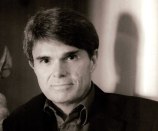

 If you are an independent author and you don’t know who Hugh Howey is, you should. He recently gave an interview to Digital Book World and he doesn’t back down on his opinions about independent publishing. I hope you enjoy this interview:
If you are an independent author and you don’t know who Hugh Howey is, you should. He recently gave an interview to Digital Book World and he doesn’t back down on his opinions about independent publishing. I hope you enjoy this interview:






![Pageflex Persona [document: PRS0000038_00054]](https://donmassenzio.files.wordpress.com/2016/03/front-cover.jpg?w=198&h=300)
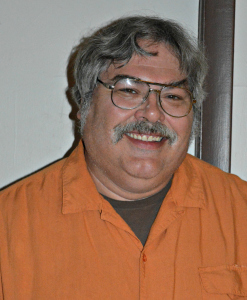 This is the inaugural interview for my blog. I wanted to start out with a special author. Nick Davis is a friend of mine. We have known each other since we were students at East Syracuse-Minoa High School (Class of 1980). We had lost touch until a couple of years ago when we realized we had some things in common. We both write books and we both are musicians.
This is the inaugural interview for my blog. I wanted to start out with a special author. Nick Davis is a friend of mine. We have known each other since we were students at East Syracuse-Minoa High School (Class of 1980). We had lost touch until a couple of years ago when we realized we had some things in common. We both write books and we both are musicians.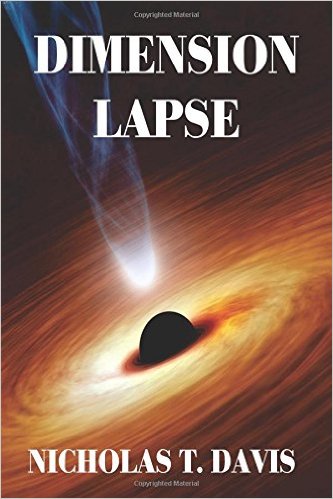


![Pageflex Persona [document: PRS0000038_00069]](https://donmassenzio.files.wordpress.com/2015/03/front-cover.jpg?w=197&h=300)


